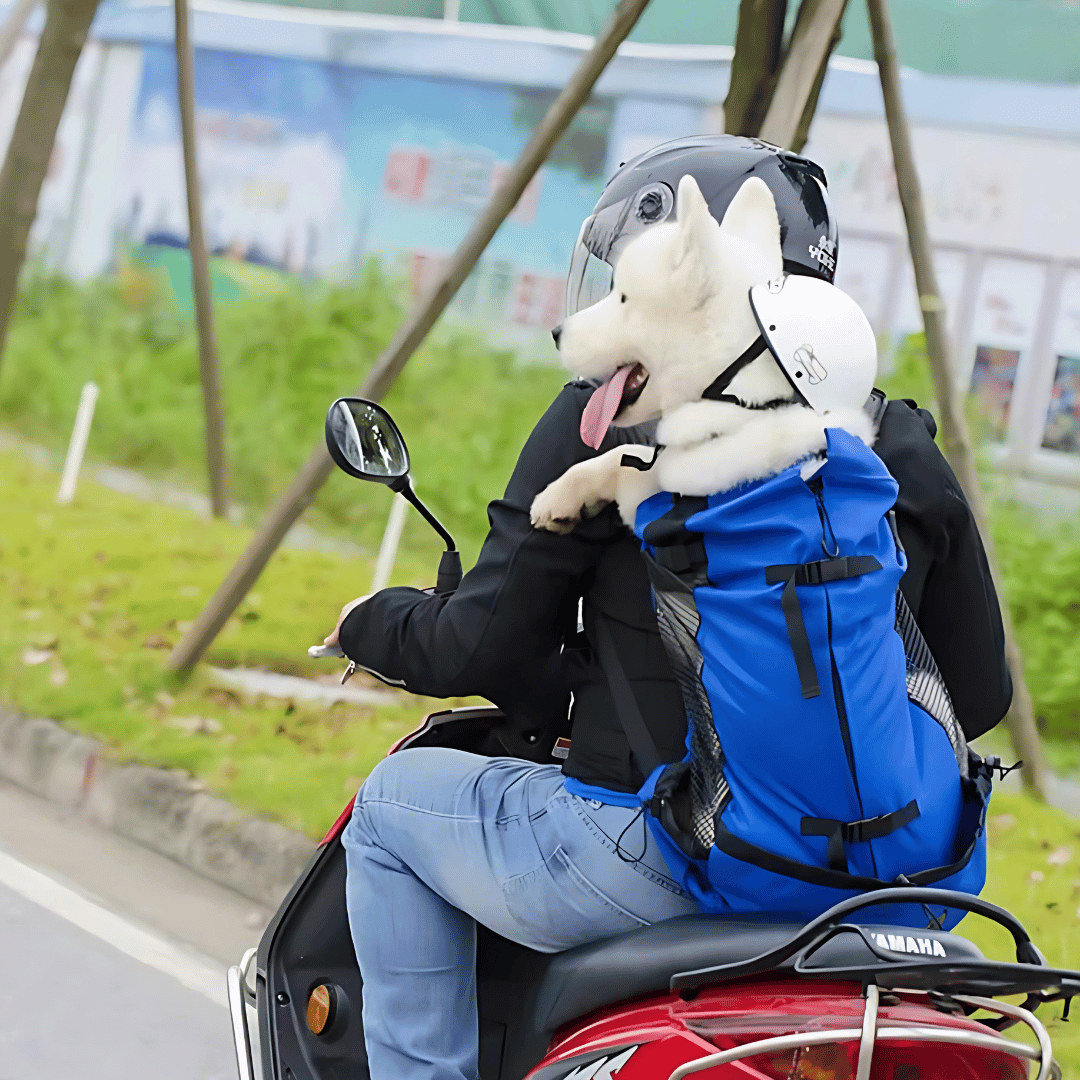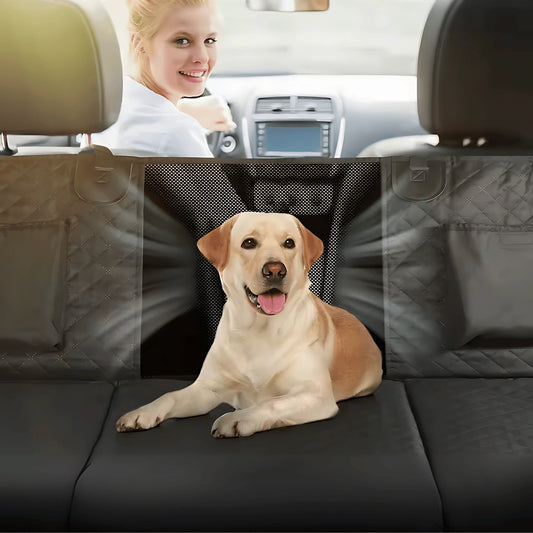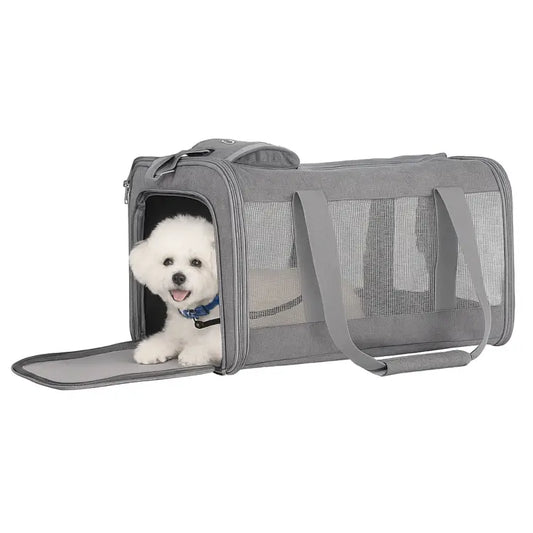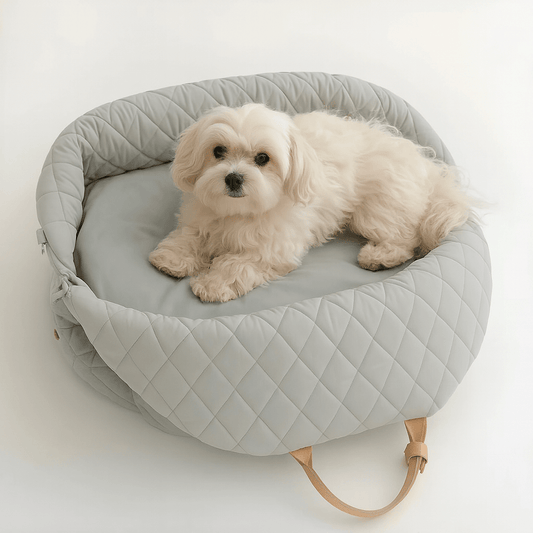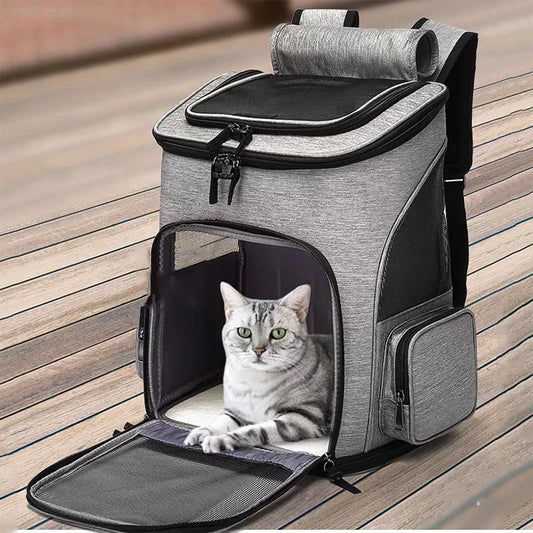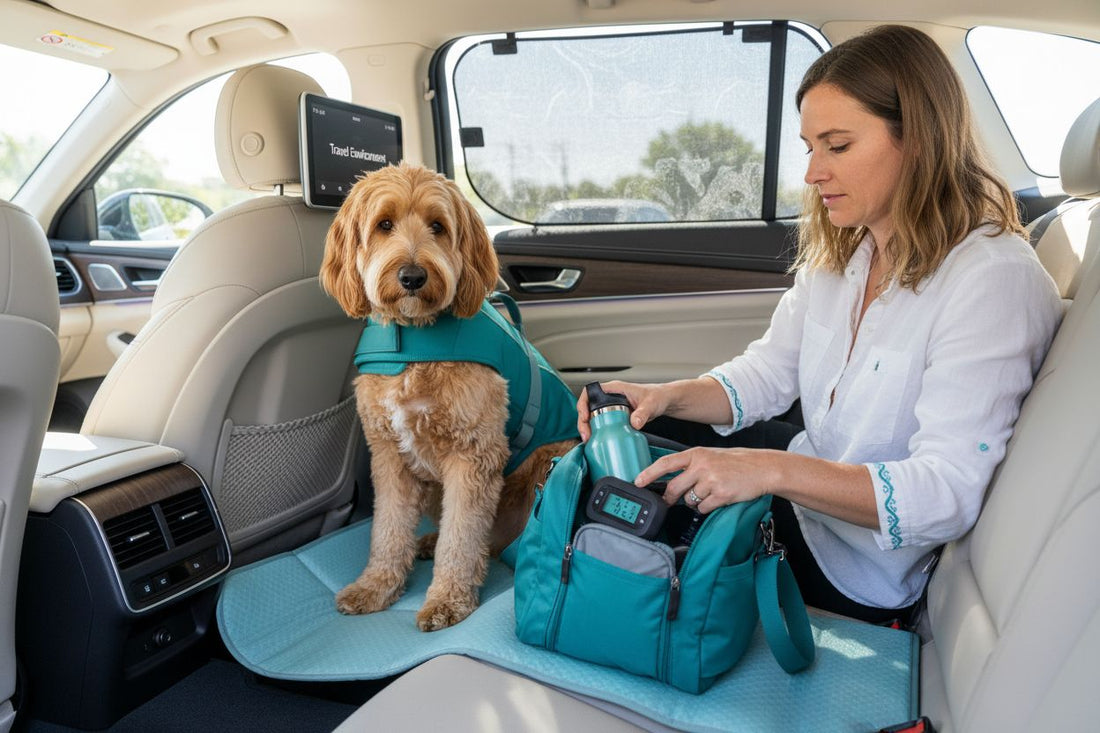
How to Keep Dog from Overheating During Travel
Share
Traveling with your dog during warm months sounds like a fun adventure. Yet a single mistake can turn it risky in seconds. Cars parked in direct sunlight can reach internal temperatures up to 30 degrees hotter than outside. Most pet owners focus on water or shade but overlook other critical factors that quietly put their furry companions at risk. The real threat often sneaks up before you notice a single drop of sweat.
Table of Contents
- Step 1: Assess The Travel Environment
- Step 2: Prepare An Adequate Cooling Plan
- Step 3: Provide Hydration Before And During Travel
- Step 4: Use Effective Cooling Gear
- Step 5: Monitor Your Dog’s Temperature Regularly
- Step 6: Recognize Signs Of Overheating And React
Quick Summary
| Key Point | Explanation |
|---|---|
| 1. Assess the travel environment | Evaluate climate, transportation mode, and travel duration to prevent overheating. |
| 2. Prepare a cooling plan | Implement hydration strategies and cooling gear to manage your dog’s temperature effectively. |
| 3. Ensure proper hydration | Encourage consistent water intake before and during travel to combat heat stress. |
| 4. Frequently monitor your dog’s temperature | Check your dog’s temperature regularly to catch signs of overheating early. |
| 5. Recognize and respond to overheating signs | Be aware of symptoms like excessive panting and disorientation to act swiftly. |
Step 1: Assess the Travel Environment
Before embarking on any journey with your dog, understanding the specific travel conditions becomes crucial in preventing overheating. The travel environment encompasses multiple factors that directly impact your pet’s temperature regulation and comfort. Climate, mode of transportation, and duration of travel are critical elements you must carefully evaluate to ensure your dog’s safety.
Start by examining the external temperature and humidity levels. High temperatures coupled with elevated humidity dramatically increase the risk of heat stress for dogs. Dogs cannot cool themselves as efficiently as humans, making them more vulnerable to rapid temperature changes. Use reliable weather apps or local meteorological reports to get precise temperature readings for your planned route.
Consider the specific characteristics of your transportation method. Cars, for instance, can transform into dangerous heat traps within minutes. Vehicles parked in direct sunlight can reach internal temperatures up to 20 to 30 degrees higher than the outside environment. If traveling by car, plan your route to minimize midday travel during peak heat hours. Early morning or late evening trips provide cooler alternatives that significantly reduce overheating risks.
Evaluate your dog’s individual characteristics that might influence heat tolerance. Factors such as breed, age, weight, and overall health play significant roles in determining heat sensitivity. Breeds with thick coats, short snouts, or those classified as brachycephalic tend to struggle more with temperature regulation. Older dogs, puppies, and pets with pre existing health conditions require extra precautions.
Verify your dog’s readiness for travel by checking these key indicators:
- Normal respiratory rate (10-35 breaths per minute)
- No signs of lethargy or excessive panting
- Hydration levels appear healthy
- No pre existing heat sensitivity symptoms
By meticulously assessing these environmental and individual factors, you establish a strong foundation for preventing dog overheating during travel. Understanding these nuances transforms your preparation from basic planning to proactive protection.
Step 2: Prepare an Adequate Cooling Plan
Creating a comprehensive cooling strategy transforms your travel preparation from basic planning to proactive protection against dog overheating. An effective cooling plan requires thoughtful selection of tools, resources, and preventative techniques tailored to your specific travel scenario and your dog’s individual needs.
Hydration management forms the cornerstone of your cooling strategy. Bring multiple water sources, including insulated containers that maintain water temperature and portable collapsible bowls for convenient drinking breaks. Calculate your dog’s water requirements based on their weight and anticipated travel duration. A general guideline suggests carrying approximately one ounce of water per pound of body weight for every hour of travel.
Select cooling accessories specifically designed for canine temperature regulation. Specialized cooling vests, which utilize evaporative cooling technology, can significantly reduce your dog’s body temperature. These garments work by absorbing and slowly releasing water, creating a cooling effect similar to human sweat mechanisms. Look for lightweight, breathable materials that provide maximum comfort without restricting movement.
Prepare a dedicated cooling kit with essential items for emergency temperature management. Your kit should include:
- Instant cold packs or gel cooling mats
- Lightweight, moisture-wicking towels
- Portable battery-powered misting fan
- Digital pet thermometer for monitoring
According to the ASPCA, strategic planning involves scheduling frequent breaks in shaded or air-conditioned environments. Plan your route to include potential cooling stations like rest areas, pet-friendly establishments, or natural shaded locations where your dog can recuperate and lower their body temperature.
Implement a proactive monitoring approach during travel. Watch for early signs of heat stress such as excessive panting, drooling, red or pale gums, and decreased energy levels. Your preparedness and quick response can prevent minor heat discomfort from escalating into a potentially dangerous situation. Remember, prevention through comprehensive planning remains the most effective strategy for keeping your dog cool and comfortable during travel.
Step 3: Provide Hydration Before and During Travel
Hydration represents the most critical defense against overheating during dog travel, functioning as a fundamental physiological cooling mechanism. Water intake before and throughout your journey can dramatically reduce the risk of heat-related complications. Developing a strategic hydration approach requires more than simply carrying water bottles.
Begin hydration preparation several hours before departure by encouraging consistent water consumption. Offer your dog fresh, cool water in a calm environment, allowing them to drink at their own pace. Avoid forcing water intake, which can cause discomfort or potential bloating. For dogs reluctant to drink, consider adding low-sodium chicken broth to their water to enhance palatability and encourage consumption.
During travel, implement a structured hydration schedule that aligns with your dog’s size, breed, and activity level. Small dogs might require more frequent but smaller water portions, while larger breeds need substantial quantities at designated intervals. Use specialized travel water bottles with integrated drinking mechanisms that minimize spillage and make drinking convenient. Explore our guide on portable pet hydration solutions to discover innovative water delivery techniques for traveling pets.
Recognize that different travel scenarios demand unique hydration strategies. Road trips allow more flexible water access, whereas air travel requires careful planning. For extended journeys, pack multiple water sources including insulated containers, collapsible silicone bowls, and emergency hydration supplements.
Monitor your dog’s hydration status through observable indicators:
- Skin elasticity test (gently pinch skin, observe quick return)
- Moist, pink gums
- Clear, light-colored urine
- Regular, steady energy levels
According to the ASPCA, consistent water availability is paramount. Never restrict water access as a method of avoiding travel accidents. Instead, plan frequent bathroom breaks and use protective seat covers to manage potential spills.
A successful hydration plan transforms water from a basic necessity into a powerful tool for temperature regulation, ensuring your dog remains comfortable, safe, and energized throughout your travel adventure.
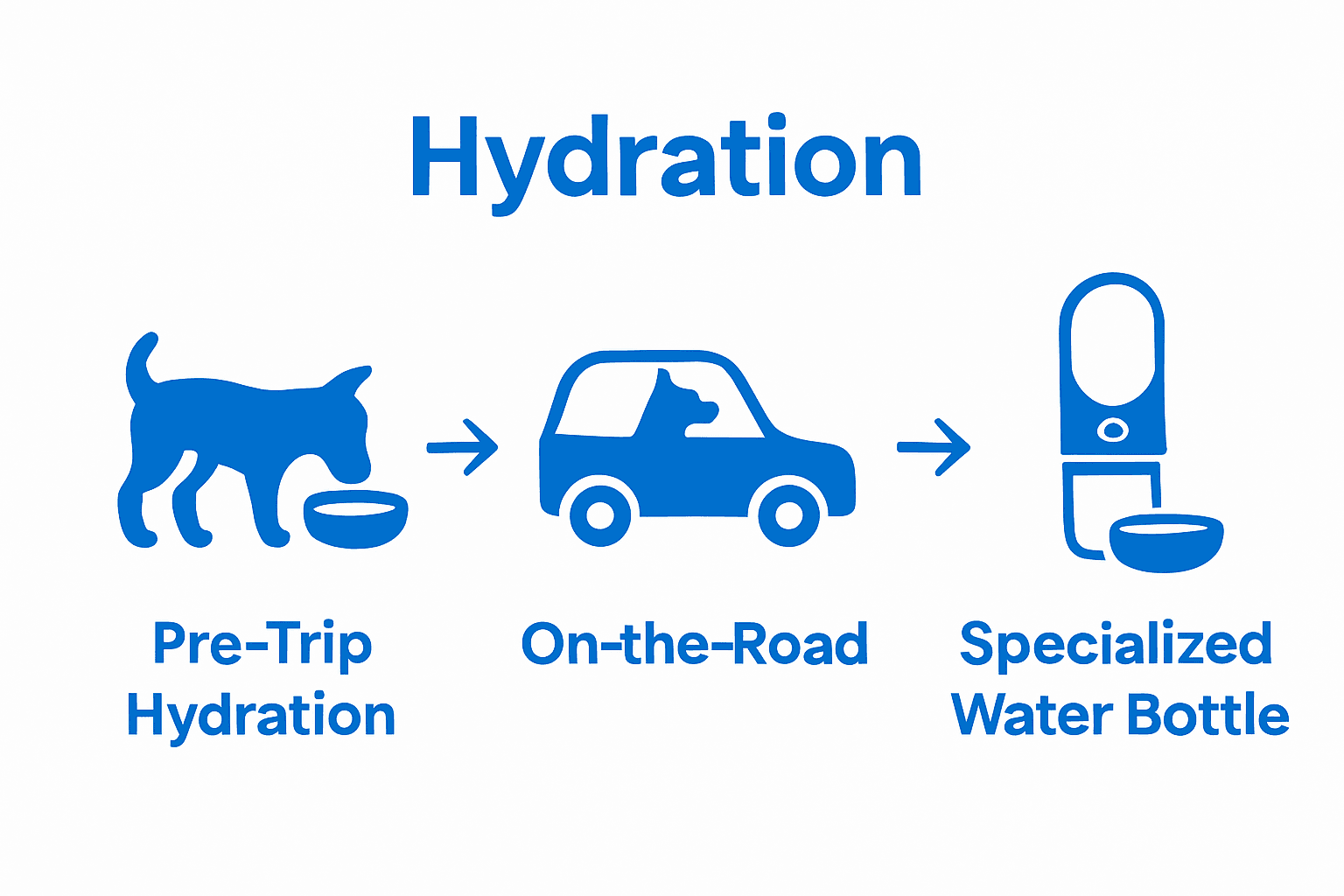
Step 4: Use Effective Cooling Gear
Specialized cooling gear represents your most proactive defense against canine overheating during travel, transforming potential heat risks into manageable challenges. The right equipment can dramatically reduce your dog’s body temperature and provide critical protection throughout your journey.
Select cooling vests designed with advanced temperature-regulation technology. These innovative garments utilize phase-change materials and evaporative cooling mechanisms to create a consistent microclimate around your dog’s body. Look for lightweight, breathable fabrics that cover the dog’s core without restricting movement. Measure your dog carefully to ensure a precise fit, as loose or tight gear can compromise cooling effectiveness.
Consider supplementary cooling accessories that offer versatile temperature management. Portable misting fans, cooling neck wraps, and gel-infused travel mats provide additional layers of thermal protection. Some advanced cooling mats utilize pressure-activated cooling technology that generates a refreshing surface when your dog lies down, creating an immediate cooling effect without requiring pre-chilling.
Transportation-specific cooling solutions demand careful selection. For car travel, invest in breathable seat covers with moisture-wicking properties and consider battery-operated fans that clip directly to pet carriers. Ensure any cooling gear you select maintains adequate airflow and does not obstruct your dog’s natural movement or create additional stress.
Verify your cooling gear’s effectiveness through these key indicators:
- Consistent, calm breathing pattern
- No signs of excessive panting
- Comfortable body posture
- Active engagement with surroundings
According to the ASPCA, selecting cooling gear that allows proper ventilation is crucial. Avoid equipment that might trap heat or restrict natural cooling mechanisms.
Remember that cooling gear is not a substitute for active monitoring and hydration. These tools complement your comprehensive heat management strategy, providing an additional layer of protection during travel. Rotate and test different cooling accessories to determine what works best for your specific dog’s breed, size, and individual temperature sensitivity.
To help you select and prepare the most effective gear for keeping your dog cool while traveling, here is a summary table of recommended cooling tools, their main purposes, and key features.
| Cooling Gear/Tool | Purpose | Key Features |
|---|---|---|
| Cooling Vest | Lowers core body temperature | Evaporative/phase-change tech, lightweight, breathable |
| Cooling Neck Wrap | Cools carotid arteries at neck | Easy to use, immediate cooling effect |
| Cooling Gel Mat | Provides a cool resting surface | Pressure-activated, no need to pre-chill |
| Portable Battery-Powered Fan | Increases airflow to your dog | Lightweight, clips to carriers or seats |
| Moisture-Wicking Towels | Provides targeted cooling at pulse points | Fast-drying, comfortable for skin contact |
| Insulated Water Bottle | Keeps water cool for longer periods | Maintains cool temp, leak-resistant |
| Digital Pet Thermometer | Monitors internal body temperature | Quick readings, easy to use for frequent checks |
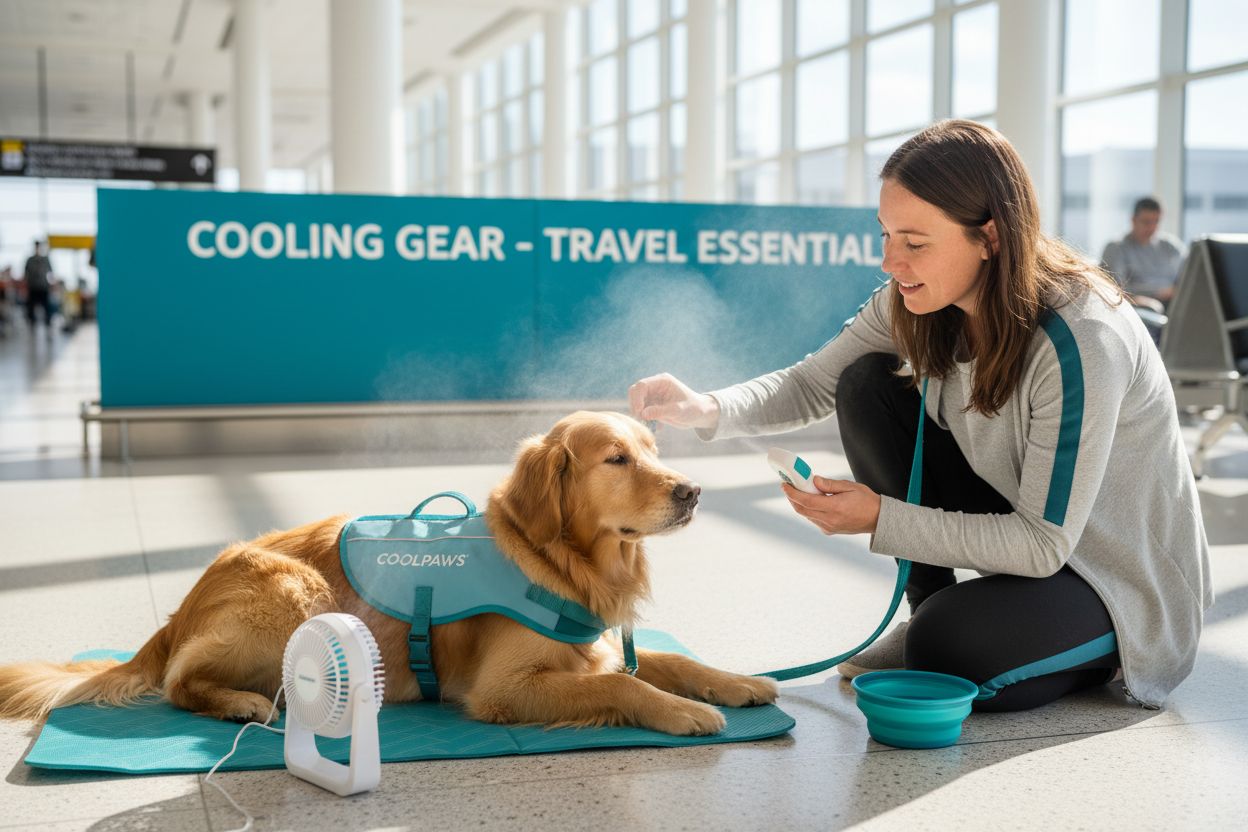
Step 5: Monitor Your Dog’s Temperature Regularly
Temperature monitoring transforms passive travel into an active safety strategy, serving as your primary defense against potential heat-related emergencies. Regular, systematic temperature tracking allows you to detect and address overheating risks before they become critical health concerns.
Invest in a reliable digital pet thermometer specifically designed for canine use. These specialized devices offer quick, accurate readings and often feature user-friendly designs that minimize stress during measurement. Rectal thermometers provide the most precise temperature assessment, but ear and forehead thermometers can offer convenient alternatives for less invasive monitoring.
Establish a consistent temperature checking routine aligned with your travel intervals. For shorter trips, assess your dog’s temperature every hour or during significant environmental transitions such as moving from air-conditioned spaces to warmer external environments. During extended journeys, create a structured monitoring schedule that accounts for changing travel conditions and your dog’s individual heat sensitivity.
Learn to recognize the nuanced physical indicators that complement numerical temperature readings. Observe your dog’s respiratory rate, gum color, and overall energy levels as complementary temperature stress signals. Rapid, heavy panting, bright red or pale gums, and sudden lethargy can indicate impending heat distress, even before a thermometer confirms elevated temperatures.
Prepare a comprehensive temperature management protocol that outlines specific actions for different thermal scenarios:
- Normal temperature range (101°F - 102.5°F): Continue current cooling strategies
- Slightly elevated (103°F - 104°F): Implement immediate cooling interventions
- High risk (104°F+): Seek emergency veterinary assistance
According to veterinary research, understanding your dog’s baseline temperature and recognizing subtle changes is crucial. Dogs cannot verbally communicate their discomfort, making proactive monitoring essential for preventing potential heat-related health emergencies.
Remember that temperature monitoring is not a passive activity but an active, dynamic process requiring constant attention and quick, informed responses. Your vigilance can transform a potentially dangerous situation into a manageable, safe travel experience for your canine companion.
Step 6: Recognize Signs of Overheating and React
Rapid recognition and immediate action are critical when managing potential dog overheating scenarios, transforming a potentially life-threatening situation into a manageable health incident. Understanding the subtle and progressive signs of heat stress enables you to intervene before conditions become dangerous.
Initial overheating symptoms often appear gradually, requiring keen observation and immediate intervention. Early warning signs include excessive panting, increased respiratory rate, and subtle changes in your dog’s energy levels. Watch for visual cues such as deep, rapid breathing where the dog’s tongue becomes elongated and develops a wide, flat appearance. The dog’s gum color can also provide critical information, with bright red or pale gums indicating potential circulatory stress.
As overheating progresses, more pronounced symptoms emerge. Drooling becomes more intense, potentially changing in consistency from clear to thick and ropey. Your dog might display signs of disorientation, weakness, or an unsteady gait. Some dogs will seek cool surfaces, attempting to lie on tile floors or shaded areas. These behavioral changes signal an urgent need for immediate cooling interventions.
Develop a systematic response protocol that addresses different stages of heat stress. When initial symptoms appear, focus on gentle cooling techniques such as moving to a shaded area, offering small amounts of cool water, and applying damp towels to pulse points like the neck, armpits, and groin. Avoid using ice-cold water, which can cause shock and constrict blood vessels, potentially worsening the situation.
Prepare an emergency cooling kit with essential items:
- Lightweight, moisture-wicking towels
- Portable battery-powered misting fan
- Collapsible water bowl
- Digital pet thermometer
- Emergency contact information for nearest veterinary clinic
According to VCA Veterinary Hospitals, dogs experiencing severe overheating require immediate professional medical attention. If your dog shows signs of extreme heat stress such as vomiting, collapsing, or seizures, transport them to a veterinary facility immediately while implementing initial cooling measures.
For quick reference, this troubleshooting table organizes the signs of canine overheating during travel, the likely causes, and the immediate recommended actions you should take.
| Symptom | Possible Cause | Recommended Immediate Action |
|---|---|---|
| Excessive panting | High temperature/humidity | Move to shade, offer cool water |
| Bright red or pale gums | Early heat stress | Begin gentle cooling, check temperature |
| Disorientation/weakness | Advanced overheating | Apply damp towels, seek veterinary help |
| Drooling (thick/ropey) | Progressing overheating | Offer water, cool with misting fan |
| Unsteady gait/collapsing | Severe heatstroke | Emergency: transport to vet immediately |
| Vomiting or seizures | Life-threatening heat stress | Begin cooling, get veterinary attention fast |
Remember that prevention and rapid response are your most powerful tools in protecting your dog from heat-related emergencies during travel.
Protect Your Dog from Overheating with Proven Travel Solutions
If reading about heat stress and travel challenges for dogs made you feel uneasy, you are not alone. Every traveler wants to avoid the heartbreak of seeing their pet uncomfortable or at risk. Overheating is a real concern, especially in cars or during summer adventures. Your dog relies on you for comfort, safety, and the right tools, such as effective cooling vests, portable water solutions, and travel gear designed to support hydration and temperature control. Make your next journey safer and more enjoyable for your furry friend with the help of expertly chosen gear.
Explore Summer Travel Essentials for Dogs
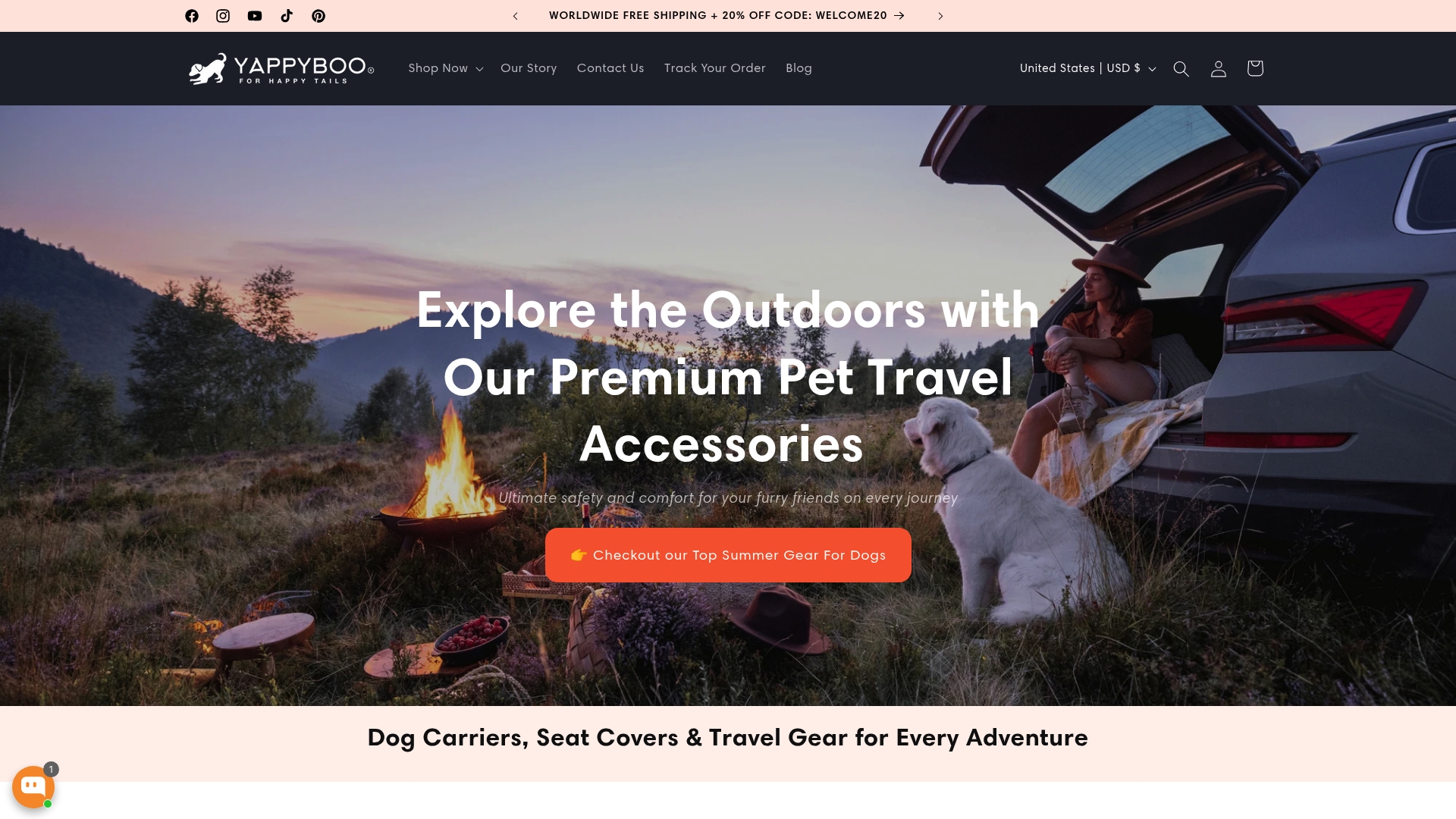
Give your dog the cool, stress-free travel they deserve. Discover our range of car accessories and portable travel beds for reliable support. Visit YappyBoo.store now to shop and see why pet owners trust our safety-first promise. Start preparing today so your dog stays protected and happy on every trip.
Frequently Asked Questions
How can I assess if my dog is at risk of overheating while traveling?
Start by checking the external temperature and humidity. Monitor your dog’s individual characteristics like breed, age, and health status. Look for early indicators such as excessive panting, lethargy, and hydration levels.
What are effective cooling methods to use for my dog during travel?
Consider using cooling vests, portable misting fans, and cooling mats designed for dogs. Ensure you also provide frequent breaks in shaded or air-conditioned areas to lower their body temperature.
How often should I check my dog’s temperature during travel?
Ideally, check your dog’s temperature every hour or whenever transitioning between drastically different environments, such as moving from air conditioning to heat. Establish a routine based on travel duration and your dog’s sensitivity to heat.
What are the signs of overheating in dogs that I should look for?
Watch for excessive panting, drooling, red or pale gums, disorientation, weakness, and rapid breathing. If these signs appear, take immediate action to cool your dog and seek veterinary help if symptoms worsen.
Recommended
- Essential Summer Gear for Dogs: Keep Your Furry Friend Cool – Yappyboo
- Top 10 Pet Travel Essentials for Dogs – Yappyboo
- Portable Pet Hydration Solutions for Summer Adventures – Yappyboo
- How to Prepare Your Dog for Long Road Trips – Yappyboo
- Was tun bei Hitze? Strategien für Gesundheit und Wohlbefinden – Kühlkern UG (Haftungsbeschränkt)
